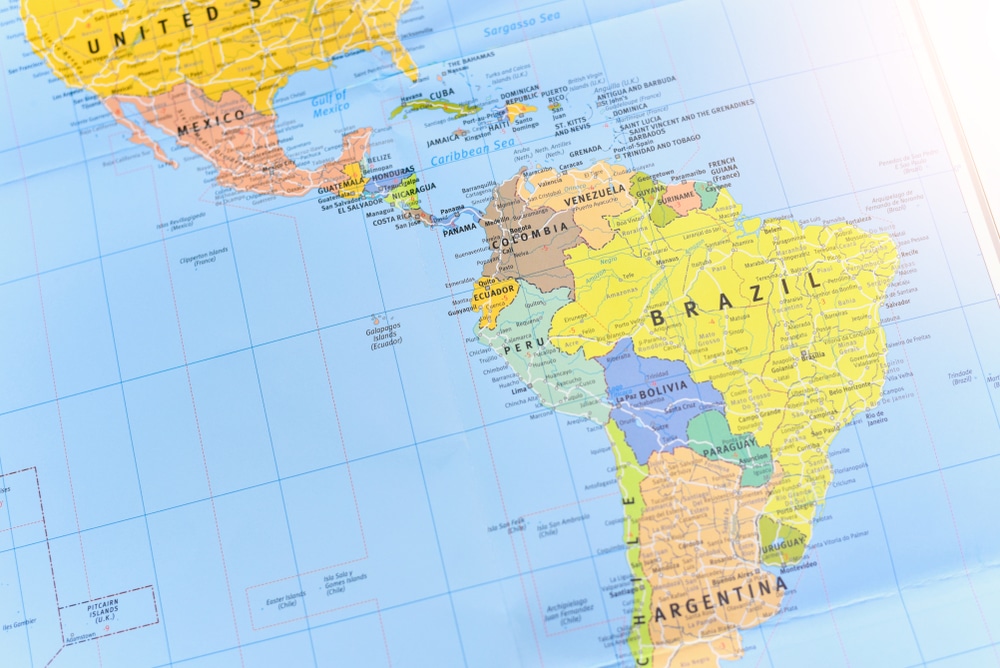5 Tax Policy Trends in Latin America Expats Need To Know Now

The years leading up to 2020 proved profitable for tax collectors in Latin America and Caribbean (LAC) countries. The region saw a sustained rise in the average tax-to-GDP ratio for three decades. That was good news for LAC governments in need of resources to fund projects.
But then the pandemic struck. LAC countries took a significant hit from COVID. Just like private businesses, tax collection suffered. That’s true for Mexico tax, specifically, and Latin America tax collection, in general.
Now, the pandemic has come close to being a manageable force in worldwide affairs.
If you’ve already settled in Latin America and the Caribbean (LAC) as an expat or plan to do so soon, it’s best to be in the know when it comes to the region’s tax policies. In that regard, here’s your much-needed primer.
Taxes in Latin America: By the Numbers
The first thing you need to know about taxation is that tax policies evolve. They are not set in stone. The same applies to the reality of tax collection. Something as disruptive as a pandemic can affect the practical aspect of taxation, which, in turn, could reshape its framework.
This is why it’s important to keep abreast of how things are going in your country of residence taxation-wise. With that said, here’s what you need to know about the state of tax policy in Latin America based on “Revenue Statistics in Latin America and the Caribbean 2021,” a joint report on tax revenue statistics covering three decades, from 1990 to 2019, from the Organisation for Economic Co-operation and Development (OECD) and other key institutions.
Between 1990 and 2019, the average tax-to-GDP ratio in LAC countries rose steadily each year, with four exceptions (1991, 1996, 2009, and 2017), increasing by more than 7 percentage points, from 15.7% to 22.9%.
This increase is credited to augmented revenues from individual income and profit taxes (3%) and value-added taxes (3.8%).
Tax revenue as a percent of GDP is on average 11 percentage points lower in Latin America than in other regions.
The tax-to-GDP ratio is 22.9%. For comparison, the OECD average is 33.8%.
At a 42% tax-to-GDP ratio, only Cuba outscores the OECD average.
Rounding up the top three tax-to-GDP ratios are Barbados (33.1%) and Brazil (33.1%).
The lowest tax-to-GDP ratios include Paraguay (13.9%), Dominican Republic (13.5%), and Guatemala (13.1%).
The average tax-to-GDP ratio for Central America and Mexico is 21.3%, making it the lowest in the region.
South American countries tally an average tax-to-GDP ratio of 22.9%, putting them in the middle of the spectrum.
Meanwhile, Caribbean countries record the highest tax-to-GDP ratio average at 24.9%.
Tax revenues come from taxes on goods and services (49.7%), corporate and individual taxes (27.3%), and social insurance taxes (17.1%).
The share of individual taxes is lower than the share of corporate taxes.
Consumption taxes other than VAT have declined due to lower trade tax revenues. The region’s policy of trade liberalization has reduced import tariffs, limited goods and services subject to excise taxes, and eliminated export taxes.
In 2019, LAC countries’ average VAT revenue ratio equaled OECD’s at 0.56.
Bahamas and Belize have the highest VAT revenue ratio due to tourism.
These numbers are worth examining because they will inform, in one way or another, your tax obligations should you decide to settle in LAC.
Tax Policy Trends in Latin American Countries
Here are the trends that are shaking up Latin America Countries’ tax policies post-pandemic.
Argentina
The country was already in recession when COVID-19 struck, with more than a third of its population living below the poverty line and inflation was above 50%. Inflation adjustments for 2019 and 2020 taxes were spread over six years to minimize the economic effect of the pandemic on taxpayers.
Meanwhile, taxes on the net equity value of stocks owned by foreign nationals and Argentines doubled from 0.25% to 0.50%.
Brazil
Even before the pandemic, Brazil was already looking at potential updates on its tax laws, which resulted in a four-phase tax reform plan. The pandemic has delayed, if not entirely derailed, those plans. The country is considering pursuing aggressive taxation of digital services to improve tax collection.
Chile
February 2020 saw significant tax reforms in the country. For example, the new tax regime for small businesses imposed a 19% VAT on digital services. In line with this, there was also a 40% income tax bracket for high-income individuals. When the pandemic hit, Chile deferred VAT payments for three months, among other contingency measures.
Moving forward, the country is looking to pursue a new equity tax applicable to higher-income tax brackets.
Colombia
According to the World Bank, Colombia’s economy grew 3.3% by 2019, just before COVID. The country enacted tax payment deferrals, tax credits, and tax incentives in order to deal with the pandemic’s economic fallout. The government has no plans to increase taxes across the board. However, with its official inclusion in the OECD, expect its tax policies to align with the organization.
Ecuador
Ecuador enacted tax reforms in 2019 to increase tax revenue and simplify tax collection. A highlight of the reform is a temporary 0.10% to 0.20% tax on companies with a 2018 gross income of $1 million. The country is encouraging foreign investors via tax relief measures, exemptions, and abatements in order to bounce back from the pandemic’s economic fallout.
Mexico
One thing a U.S. expat in Mexico should know is that the country is strict in its efforts to curb profit shifting and strengthen tax compliance. Already in recession before the pandemic, COVID caused the country’s economy to contract by 18.9%.
Mexico is considering a more aggressive approach to both multinational and domestic taxpayers to mitigate the loss of revenue. The government has set its eyes on potential sources of income, such as the food, steel, cars, pharmaceutical, mining, energy, and retail sectors.
Paraguay
The economy of the country was supposedly on the road to recovery before the pandemic struck. Part of that recovery is a tax reform enacted in September 2019. Among the new policies introduced is the 10% tax on agricultural, commercial, industrial, and service activities.
A stipulation most relevant to expats is the 15% non-resident tax on income, profits, and benefits from rendered services.
Because of COVID-19, certain tax related activities were either suspended or delayed, such as the filing of tax returns. No significant shifts in tax policies are in the offing.
Latin American Taxation from the Top
Now let’s delve deeper into some of the trends mentioned in the previous section.
1. Going Global – Various tax shifts confront foreign-owned companies in Latin America. Those are informed by both local and foreign tax rules, all aimed at curbing profit shifting and base erosion. As a result, the region is increasingly becoming tax-effective.
2. Foreign Direct Investments (FDI) – In 2018, FDI inflows to Latin America reached $184.3 billion, amounting to a 13.2% growth from the previous year. The largest FDI shareholders are Brazil, Mexico, Argentina, Colombia, and Panama. The U.S. being the LAC countries’ biggest FDI source means President Biden’s tax policies will inform the conduct of business in the region.
3. Multilateral Instrument – OECD-developed multilateral instruments will continue to factor into LAC tax policies. Those cover rules on capital gains tax exemptions and foreign-source dividends withholding tax rate reductions. So far, the MLI has been signed by Mexico, Chile, and Argentina. That makes these countries on the same playing field as European nations instituting the same tax rules.
4. OECD Impact on Domestic Laws – OECD Base Erosion and Profit Shifting (BEPS) measures will increasingly inform how LAC countries conduct taxation. Countries like Mexico, Chile, and Colombia are at the forefront of the LAC OECD movement.
5. New Opportunities for Foreign Investors – LAC countries are intent on modernizing and globalizing their tax systems to attract more foreign investors. Countries like Brazil, Mexico, and Argentina are especially competitive in this regard. Expect more shifts in the region’s taxation landscape as LAC countries further advance their goal of internationalizing their economies while rising from the pandemic.
Summing It Up
As an American expat, you need to file your tax returns and pay corresponding taxes regardless of where you choose to reside. For Latin America and the Caribbean (LAC) host countries, there might be tax policies unique to the region, which you need to know and honor. As they say, ignorance of the law excuses no one.
In cases where you find yourself confused about your tax responsibilities as an expat, reach out to us for help. Remember that you’re not legally limited to handling tax concerns all by yourself. You could hire tax professionals on your behalf. Reach out to us at Tax Samaritan.


